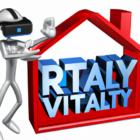As remote work becomes the norm for many organizations, cybersecurity has never been more critical. Protecting sensitive data and ensuring secure remote access is essential for businesses and their employees. Here are some cybersecurity tips remote workers can use to safeguard their digital environments.
1. Use a Virtual Private Network (VPN)
A VPN encrypts your internet connection, making it more difficult for hackers to intercept data. Always connect to a VPN when accessing the company’s internal network or sensitive information.
2. Implement Strong Password Policies
Adopt strong, unique passwords for each account and consider using a password manager to keep track of them. Encourage the use of two-factor authentication (2FA) wherever possible to add an extra layer of security.
3. Regular Software Updates
Ensure that all software, including operating systems and applications, are updated regularly. Software updates often include patches to security vulnerabilities that can be exploited by attackers.
4. Be Wary of Phishing Attempts
Phishing attacks are on the rise, especially in remote work setups. Be cautious about clicking on links or opening attachments from unknown sources. Always verify the sender before responding to emails.
5. Secure Your Home Network
Change the default passwords on your Wi-Fi router and ensure your network is secure. Implement a firewall and limit access to the network to trusted devices only.
6. Back Up Data Regularly
Regular data backups can prevent data loss in the event of a cyberattack. Use cloud storage solutions or external hard drives to back up essential files and documents.
7. Educate Yourself and Your Team
Cybersecurity is an ever-evolving field. Stay informed about the latest threats and best practices. Regular training sessions can help ensure that everyone in the organization is aware of cybersecurity risks.
Conclusion
By implementing these cybersecurity best practices, remote workers can significantly reduce their risk of cyber threats. As the landscape of remote work evolves, staying proactive about data protection is essential for both personal and organizational security.
For more insights and tips on cybersecurity for remote work, stay tuned!











